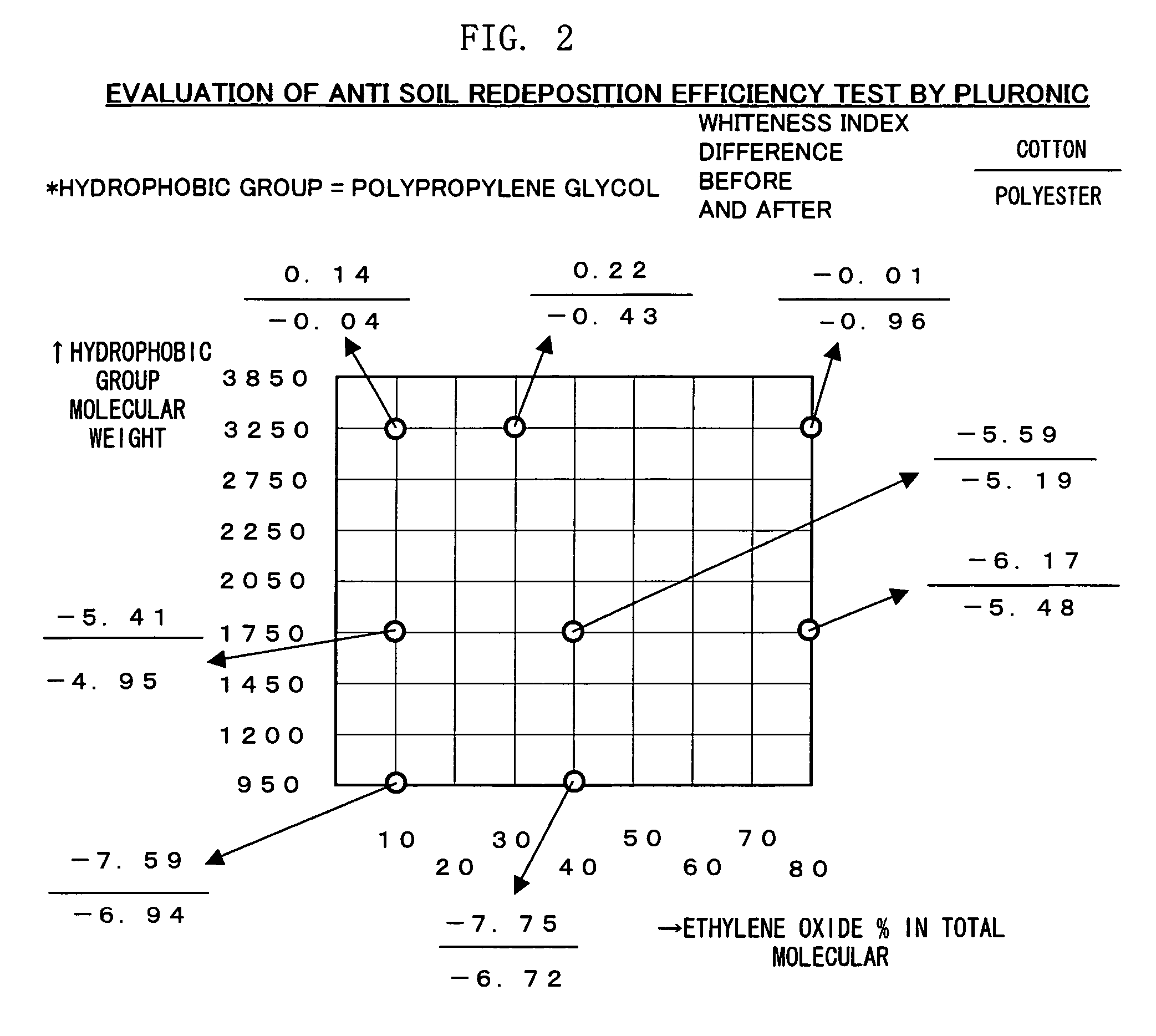Surfactant-free detergent composition comprising an anti-soil redeposition agent
a detergent composition and surfactant-free technology, applied in the field of laundering clothes, can solve the problems of not all of the gains to consumers from synthetic detergents are positive, cannot be escaped, and the adverse effects of synthetic detergents on organisms, including the possibility of being an endocrine disrupting chemical, have recently begun to be raised, so as to reduce the burden on the environment and reduce the effect of anti-soil redeposition efficiency
- Summary
- Abstract
- Description
- Claims
- Application Information
AI Technical Summary
Benefits of technology
Problems solved by technology
Method used
Image
Examples
example 1
[0135]A washing liquid having a detergent concentration of 1.34 g / L and a pH of 10.6 was obtained by dissolving a total component amount of 41.4 g of detergent having a respective component composition of 9 g of sodium carbonate, 10 g of sodium hydrogen carbonate, 22 g of sodium metasilicate (9-hydrate), 0.2 g of methyl cellulose and 0.2 g of polyvinyl alcohol in 31 liters of tap water. The detergency ratio of the respective stained fabrics was measured before and after washing with the washing liquid. The results are shown in Table 15.
example 2
[0136]A washing liquid having a detergent concentration of 1.82 g / L and a pH of 10.6 was obtained by dissolving a total component amount of 56.4 g of detergent having a respective component composition of 16 g of sodium hydrogen carbonate, 40 g of sodium metasilicate (9 hydrate), 0.2 g of methyl cellulose and 0.2 g of polyvinyl alcohol in 31 liters of tap water. The detergency ratio of the respective stained fabrics was measured before and after washing with the washing liquid. The results are shown in Table 15.
example 3
[0137]A washing liquid having a detergent concentration of 0.85 g / L and a pH of 10.3 was obtained by dissolving a total component amount of 26.4 g of detergent having a respective component composition of 18 g of sodium carbonate, 8 g of sodium hydrogen carbonate, 0.2 g of methyl cellulose and 0.2 g of polyvinyl alcohol in 31 liters of tap water. The detergency ratio of the respective stained fabrics was measured before and after washing by using the washing liquid. The results are shown in Table 15.
PUM
| Property | Measurement | Unit |
|---|---|---|
| surface tension | aaaaa | aaaaa |
| concentration | aaaaa | aaaaa |
| concentration | aaaaa | aaaaa |
Abstract
Description
Claims
Application Information
 Login to View More
Login to View More - R&D
- Intellectual Property
- Life Sciences
- Materials
- Tech Scout
- Unparalleled Data Quality
- Higher Quality Content
- 60% Fewer Hallucinations
Browse by: Latest US Patents, China's latest patents, Technical Efficacy Thesaurus, Application Domain, Technology Topic, Popular Technical Reports.
© 2025 PatSnap. All rights reserved.Legal|Privacy policy|Modern Slavery Act Transparency Statement|Sitemap|About US| Contact US: help@patsnap.com



